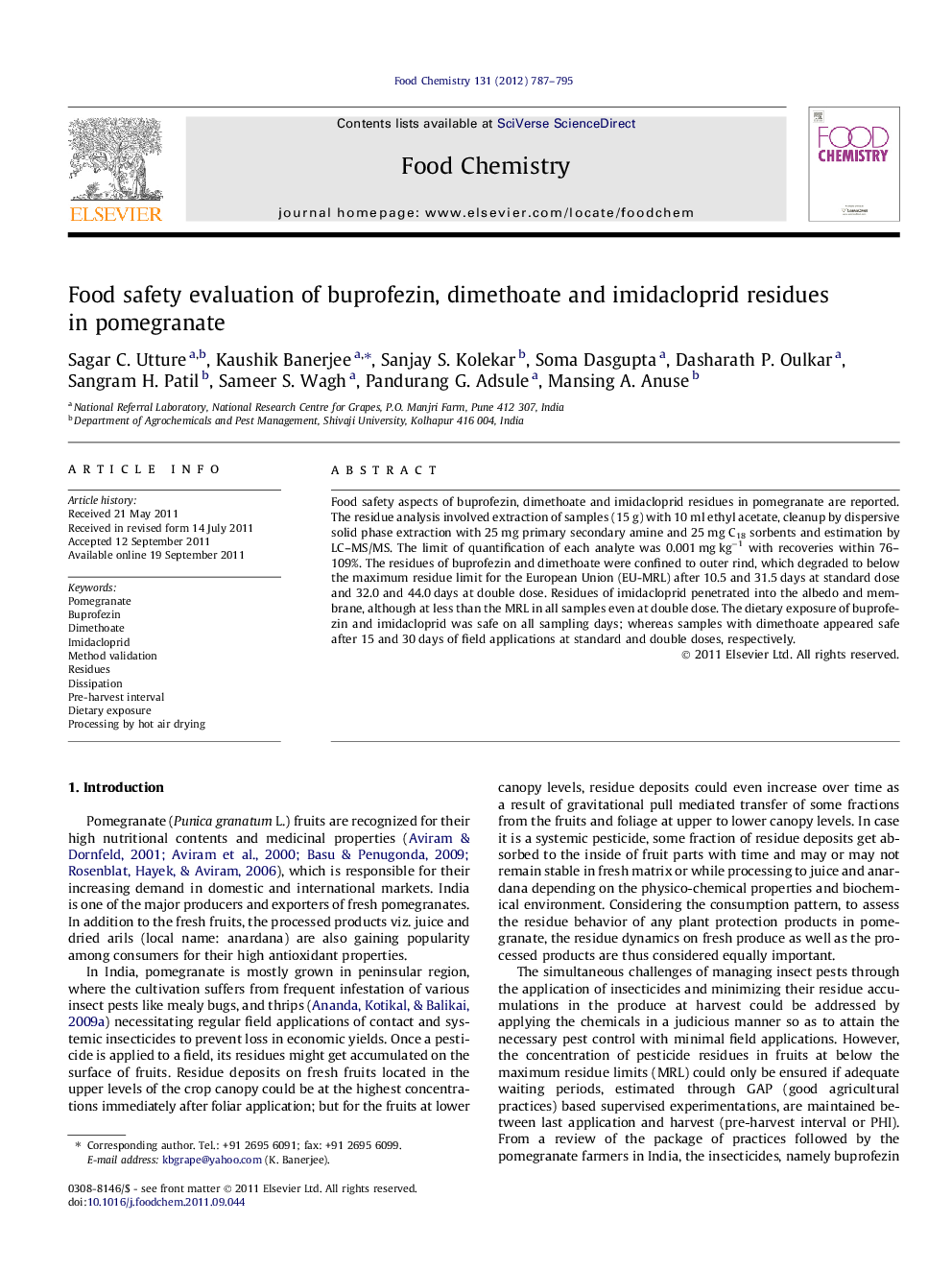| Article ID | Journal | Published Year | Pages | File Type |
|---|---|---|---|---|
| 1188112 | Food Chemistry | 2012 | 9 Pages |
Food safety aspects of buprofezin, dimethoate and imidacloprid residues in pomegranate are reported. The residue analysis involved extraction of samples (15 g) with 10 ml ethyl acetate, cleanup by dispersive solid phase extraction with 25 mg primary secondary amine and 25 mg C18 sorbents and estimation by LC–MS/MS. The limit of quantification of each analyte was 0.001 mg kg−1 with recoveries within 76–109%. The residues of buprofezin and dimethoate were confined to outer rind, which degraded to below the maximum residue limit for the European Union (EU-MRL) after 10.5 and 31.5 days at standard dose and 32.0 and 44.0 days at double dose. Residues of imidacloprid penetrated into the albedo and membrane, although at less than the MRL in all samples even at double dose. The dietary exposure of buprofezin and imidacloprid was safe on all sampling days; whereas samples with dimethoate appeared safe after 15 and 30 days of field applications at standard and double doses, respectively.
► Food safety of buprofezin, dimethoate and imidacloprid in pomegranate reported. ► Dissipation of residues followed first + first order kinetics. ► Residues of buprofezin and dimethoate were confined to outer rind of fruits. ► Imidacloprid penetrated into albedo and membrane with residues
